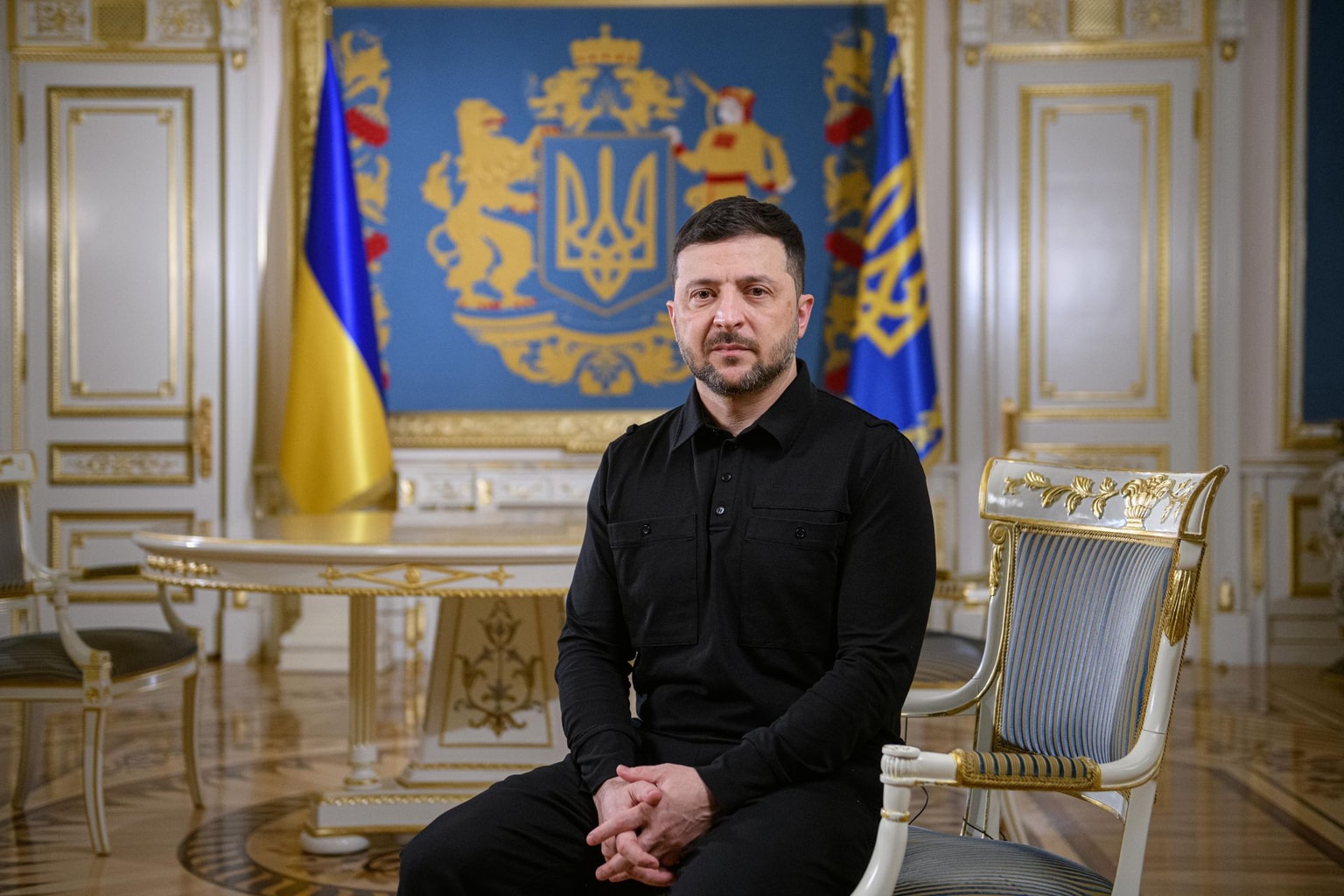
Economy Minister: They said no one would invest in country at war. They were wrong
High-rise buildings under construction, featuring unfinished concrete and brick structures in Uzhhorod, Ukraine on Nov. 4, 2024. (Mykhaylo Palinchak/SOPA Images/LightRocket via Getty Images)

Yulia Svyrydenko
In early 2022, the Ukrainian team of an Austrian wood processing company held a meeting in a bomb shelter during an air raid alert. Despite a Russian strike nearby, their focus wasn't on relocation but on building a new logistics center in the country.
A year later, their determination paid off — built from scratch, a new 22-million-euro facility was a symbol of resilience and trust.
At the onset of the invasion, some claimed no one would invest in a country at war. They were wrong.
Most regions are now relatively safe for business, with robust investor support programs driving steady Foreign Direct Investment (FDI) growth ($4.2 billion in 2023 and $3.5 billion in the first 10 months of 2024). Despite a significant portion coming from reinvestments, new investments are also on the rise.
Today, Ukraine's primary investors are domestic companies and investors committed to the country's future. Despite the war, they continue launching new products and expanding their reach to new markets in sectors such as agriculture, construction, logistics, energy, machine industry, and pharmaceuticals.

Foreign companies are cautiously following suit.
Unilever is building new production facilities, Azerbaijan's NEQSOL Holding acquired Ukraine's largest titanium production company through major privatization efforts, and Austrian Kronospan has built a new production line in Rivne.
A standout business case is French investor Xavier Niel's $600-million acquisition of a Ukrainian telecom provider — the largest deal since the start of the full-scale invasion. Even before 2022, such deals were rare.
Those who recognize the opportunities today can already reap the benefits. So, what does Ukraine offer?
Compensations, tax benefits, affordable loans
Several tools are in place for those looking to establish production in Ukraine. Among the most effective ones are industrial parks. Currently, 25 industrial enterprises are operating or being built in these parks, including branches of foreign companies, spanning sectors like agro-processing, woodworking, and machinery.
In 2024, Ukraine allocated around 1 billion hryvnias ($25 million) in state support to develop industrial infrastructure in 15 industrial parks. Manufacturers operating in these zones benefit from tax and customs incentives.
Access to finance is facilitated through the 5-7-9% Affordable Loans Program, which has been refocused on investment goals. The program now includes financing energy equipment as well.
Additionally, the Significant Investments Program is now operational.
Businesses investing at least 12 million euros can qualify for up to 30% compensation through tax and customs benefits and other forms of state support. The first agreements under this program have already been signed.
9.3 billion euros from EU's Ukraine Investment Framework
Ukraine is also attracting investments with our partners' support.
The 50-billion-euro Ukraine Facility program by the European Commission includes an investment component, the Ukraine Investment Framework (UIF), worth 9.3 billion euros.
This mechanism combines European Commission guarantees, grants, and technical assistance combined with other financial tools available in Ukraine. We anticipate this initiative will draw up to 40 billion euros over the next few years, with each euro of guarantees potentially attracting an additional 2–4 euros in investments.

The first 1.4 billion euros under the UIF is already accessible in the form of guarantees, financing, grants, and technical assistance. These funds are channeled through programs of the European Bank for Reconstruction and Development (EBRD), European Investment Bank (EIB), International Finance Corporation (IFC), German Development Bank (KfW), European Fund for Southeast Europe (EFSE), and Polish National Development Bank (BGK).
Both Ukrainian and foreign businesses can submit their projects to these institutions or partner banks in Ukraine to apply for financing.
Next year, the European Commission is expected to announce additional programs totaling approximately 3 billion euros for public sector projects. It plans to introduce direct financing for the corporate sector and investments in private equity through private equity funds.
Currently, international financial institutions and the European Commission are in the process of selecting projects eligible for funding. A detailed handbook provides step-by-step guidance for businesses on how to submit applications.
Attracting funding for private, public investment projects
We aim to make investing as transparent as possible, so the government has developed digital databases of public and private projects.
For the first time in history, the government has created a Single Project Pipeline comprising 787 public investment projects. Some of them are already funded by the state budget, some by international financial institutions. For projects that require further refinement, we will establish a Project Preparation Facility in 2025. For example, if a community requires investment for reconstruction but cannot prepare a bankable project, this facility will provide support. Requests for assistance will need to be submitted through the DREAM system.
Moving from public to private sector projects, proposals from businesses are consolidated on the Investment Portal. Its 126 projects worth $28.9 billion in key sectors such as agricultural processing, transportation and logistics, energy, green transition, critical materials, manufacturing, IT, and digitalization. We're also exploring the launch of a similar Project Preparation Facility to help the private sector develop business projects in strategic sectors.
Public-private partnership mechanism
Pending legislative changes aim to improve public-private partnerships (PPPs) in Ukraine. A draft law currently awaiting a vote would simplify the process of attracting private capital, enable the combination of private and donor grant financing, and offer stronger guarantees for investors, aligning PPP procedures with EU standards.
Preparations are underway for concession projects at the Chornomorsk port and pilot healthcare PPPs. If the law is approved in 2025, the first tenders for private partners could be announced immediately.
Privatization — new life for loss-making state assets
The year 2024 marked a milestone for Ukraine's privatization efforts. Iconic assets like the Hotel Ukraine, the titanium producer United Mining and Chemical Company, and the first sanctioned asset, the Aeroc Plant, found new owners.
Loss-making state enterprises now have an opportunity to revive, while sanctioned assets, once security threats, will become engines of national recovery. As a result, privatization revenues reached nearly 12 billion hryvnias (nearly $300 million) — triple the original target for 2024.

War insurance infrastructure
For some investors, war risks remain significant barriers to entering the Ukrainian market. This is why developing a robust insurance infrastructure is a priority.
This year, Ukraine's Export Credit Agency began offering war insurance for export-oriented manufacturers, and the first contracts have been signed.
We've also launched the Unity mechanism to insure vessels traveling to and from Ukraine through the Black Sea corridor, while the EBRD introduced long-awaited cargo insurance.
The U.S. International Development Finance Corporation expanded its tools, enabling small and medium businesses to secure insurance through Ukrainian reinsurers. Additionally, successful projects have been implemented with the Multilateral Investment Guarantee Agency (MIGA).
Looking ahead, we're working with the National Bank on legislation to establish a comprehensive state-backed war risk insurance system for both individuals and businesses.
War doesn't put a cap on investment.
Nearly three years of the full-scale war have proven that despite all, investors are willing to see Ukraine as a destination for their capital.
Following the construction of a new logistics center, the Austrian investor launched a new 200 million euro chipboard production line in Rivne.










